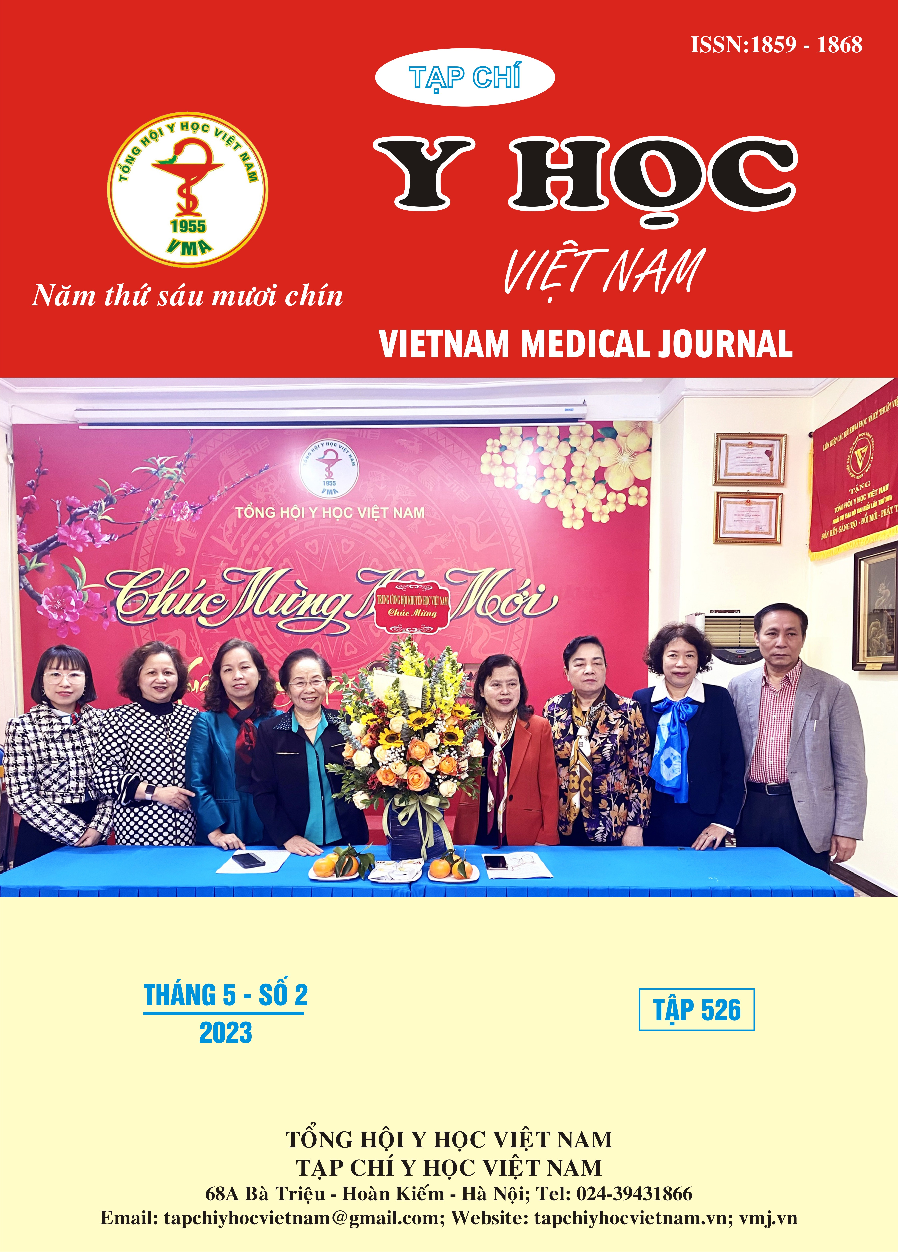SURVEYING THE CHARACTERISTICS OF ANGLE OF UNCINATE PROCESS ON COMPUTERIZED TOMOGRAPHIC IMAGES AT NGUYEN TRI PHUONG HOSPITAL FROM 09/2020 TO 08/2022
Main Article Content
Abstract
Introduction: According to the hypotheses, the obstruction of the ostiomeatal complex is one of the causes of chronic rhinosinusitis. It is hypothesized that angle of uncinate process related to the pathophysiology of the obstruction the ostiomeatal complex in chronic rhinosinusitis? Objectives: Determine the angle of uncinate process, diameter of maxillary sinus ostium, evaluate the correlation of the angle of uncinate process and chronic maxillary sinusitis using computed tomography images. Methods: The descriptive study included 190 adults who were examined in Otorhinolaryngology clinic of Nguyen Tri Phuong Hospital in the period from 09/2020 to 08/2022. The paranasal sinus CT images were obtained and analyzed to measure angle of uncinate process, diameter of maxillary sinus ostium, identify the existence of chronic maxillary sinusitis. Results: The mean angle of uncinate process was 33,45 ± 11,99°. No significant differences were found between angle of uncinate process and the ipsilateral chronic maxillary sinusitis (p > 0.05). The mean diameter of maxillary sinus ostium was 2,65 ± 0,87mm. Conclusions: The value of angle of uncinate process and diameter of maxillary sinus ostium can be measured roughly based on CT scan. Angle of uncinate process has not found to be related to chronic maxillary sinusitis.
Article Details
Keywords
Angle of uncinate process, diameter of maxillary sinus ostium, chronic maxillary sinusitis
References
2. WAN Hongyan, YANG Yu, Zhenchang W. Imaging anatomical study of uncinate process and its neighboring structure in adult OMC. CHIN ARCH OTOLARYNGOL HEAD NECK SURG. 2013;20(7):363-366.
3. Khojastepour L, Haghnegahdar A, Khosravifard N. Suppl-1, M5: Role of Sinonasal Anatomic Variations in the Development of Maxillary Sinusitis: A Cone Beam CT Analysis. The open dentistry journal. 2017;11:367.
4. Peter SS, Nambiar P, Krishnan S, Al-Namnam NM. The Location and Diameter of the Primary Maxillary Sinus Ostium: A Cone-Beam Computed Tomography Study in Malaysians. Journal of International Dental and Medical Research. 2020;13(4):1365-1369.
5. Mudgade DK, Motghare PC, Kunjir GU, Darwade AD, Raut AS. Prevalence of anatomical variations in maxillary sinus using cone beam computed tomography. Journal of Indian Academy of Oral Medicine and Radiology. 2018;30(1):18.
6. R. G. Evaluation of Anatomy of the Maxillary Sinus Ostium: An Institutional Based Cadaveric Study. Int Arch BioMed Clin Res. 2020;6(3)
7. Reddy N, Shamkuwar S, Mokhasi V. Anatomy of the maxillary sinus ostium: a cadaveric study. Int J Anat Res. 2019;7(4.2):7097-7100.
8. Basurrah MA, Kim SW. Factors affecting dimensions of the ethmoid infundibulum and maxillary sinus natural ostium in a normal population. Saudi Medical Journal. 2021;42(9):981-985.


